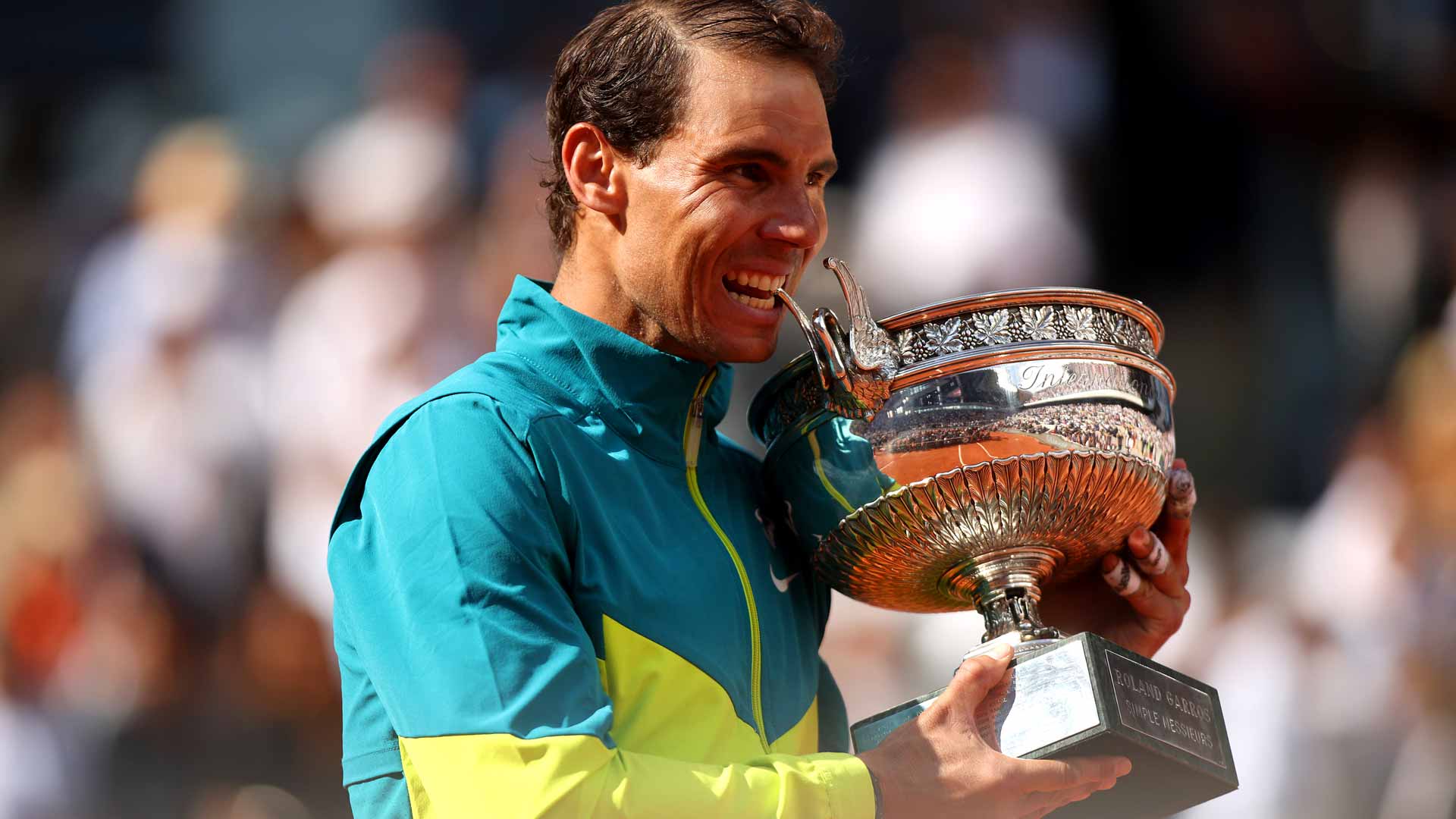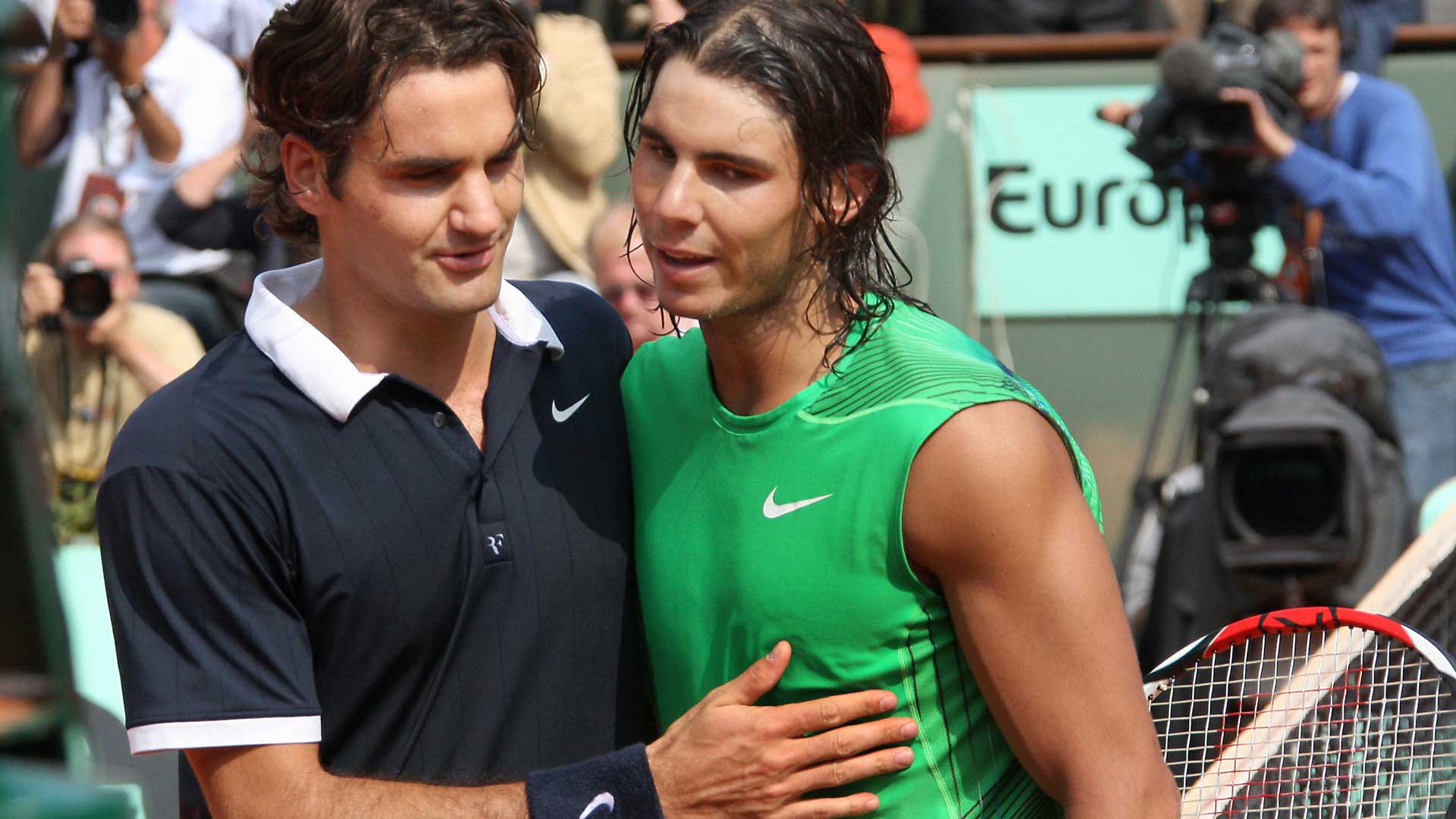

Nineteen years after he roared to the Roland Garros title in his tournament debut, Rafael Nadal will compete at the clay-court major for what may be the last time in 2024. With 14 titles, 112 match wins and a preposterous 97 per cent win rate at the event, the Spaniard has owned the tournament like few athletes have owned any competition in the history of sport.
The 37-year-old returns to Roland Garros two years after his most recent triumph in 2022; last season, a hip injury kept him off the famous terre battue for the first time after 18 consecutive appearances. Though he enters Paris outside the Top 250 in the PIF ATP Rankings this year, Nadal is still No. 1 in the hearts of many French fans.
It all started in 2005 in his tournament debut. In a dominant clay season on the ATP Tour, Nadal won 17 consecutive matches to claim titles in Monte-Carlo, Barcelona and Rome. He carried that form into the French capital, losing just one set in reaching the semi-finals and winning 6-0 sets against Sebastien Grosjean and David Ferrer along the way.
On his 19th birthday, he met World No. 1 Roger Federer in a semi-final showdown — the pair's third of what would eventually become 40 Lexus ATP Head2Head meetings. Dressed in his iconic green sleeveless top and white capri shorts, Nadal made the biggest statement of his young career with a 6-3, 4-6, 6-4, 6-3 win, capturing the imagination of the Paris crowd as he continued his rapid ascent to the top of the game.
Against Mariano Puerta in the final, Nadal dropped the opening set — trailing for the first time all tournament — but ultimately blitzed past the Argentine in four sets. His post-match comments further endeared him to the French.
"It was my dream to win a Grand Slam title, but especially Roland Garros, because that's the tournament that all Spanish want to win," Nadal said.

Nadal at Roland Garros in 2005. Photo by Clive Mason/Getty Images.
That triumph began a run of four consecutive Roland Garros crowns for Nadal, all before he won his first major title outside of Paris at Wimbledon in 2008. He lost just three sets at the tournament in 2006, one in 2007 and none in 2008, beating Federer in all three finals. That 2008 performance, during which he lost just 41 games in 21 sets and also beat Novak Djokovic in the semi-finals, cemented Nadal's status as King of Clay.
"I am humble," Nadal said at the time, "but the numbers are the numbers."
"It's the strongest Rafa that I've ever seen," Federer assessed after Nadal's 6-1, 6-3, 6-0 final victory. "He was more dominant than the previous years."

Federer congratulates Nadal after the 2008 final. Photo by Thomas Coex/AFP via Getty Images.
After a shock fourth-round defeat in 2009 to a red-hot Robin Soderling — one of the biggest upsets in tennis history — order was restored in 2010 when he beat the hard-hitting Swede in a straight-sets final. Once again, Nadal did not drop a set on his way to the title.
At the midpoint of his career, Nadal re-established his stranglehold on Roland Garros by winning five straight titles from 2010-14. Despite the presence of the rest of the Big Four — Federer, Djokovic and Andy Murray — the Spaniard's success took on an air of inevitability. Paris previews pitted Rafa against the field... and no one was taking the field.
The furthest Nadal was pushed during that period was a five-set semi-final against Djokovic in 2013, a classic encounter that ended 6-4, 3-6, 6-1, 6-7(3), 9-7 in favour of the Spaniard after four hours, 37 minutes. One year after Djokovic won a five-hour, 53-minute Australian Open final between the pair — the longest major final in history — Nadal prevailed on what had essentially become his home court.
"You need to love the game," he said when asked how he pulled out the victory. "I lost a match like this in Australia. This one was for me."
 Nadal celebrates after beating Djokovic in the 2013 semi-finals. Photo by Clive Brunskill/Getty Images.
Nadal celebrates after beating Djokovic in the 2013 semi-finals. Photo by Clive Brunskill/Getty Images.
Early exits in 2015 (l. to Djokovic in quarter-finals) and 2016 (when he withdrew ahead of the fourth round with a wrist injury) were remedied by a run of five titles in six years from 2017-22. The Spaniard's 2017 triumph broke a three-year drought at the majors and heralded a new era of Nadal dominance at Roland Garros and beyond.
In this late phase of his career, with his status as a living legend secure, Nadal continued to rewrite the history books in Paris. The same way Nadal once dreamed of winning Roland Garros, today's young players now dream of a matchup with the Spaniard on Court Philippe Chatrier. In many cases, those matches were seemingly decided in less time than it takes the stadium court's announcer to rattle off all of Nadal's title-winning years in what has become a famous part of the 'Rafa at Roland Garros' experience.
When Sebastian Korda, who named his cat after Nadal, neared a fourth-round meeting with the Spaniard in 2020, he was eager for the opportunity — even if he knew it would likely end in defeat: “It won't be easy," he said. "I'll be the happiest person on planet Earth if I do get to play him."
Nadal taught him a lesson he will never forget in a straight-sets thumping, then went on to win the tournament without losing a set for the fourth time. Four years later, in preparation for this year's event, the pair practised together on Chatrier — where Nadal will soon aim to add to what may be the greatest record in sports.
When Bjorn Borg won six Roland Garros titles, including four in a row from 1978-81, many thought that mark was untouchable. When Pete Sampras tallied 14 major crowns, that number seemed impossible to catch.
By matching Sampras' grand total at Roland Garros alone, Nadal has pushed the boundaries of what anyone thought possible. Though he is now pushing the limits of his 37-year-old body, no one would dare underestimate what the Spaniard is capable of on the Paris clay.
"The French Open is the most important tournament of my tennis career," he said ahead of his farewell. "All the things that I lived there, enjoyed there, stays in my heart forever."